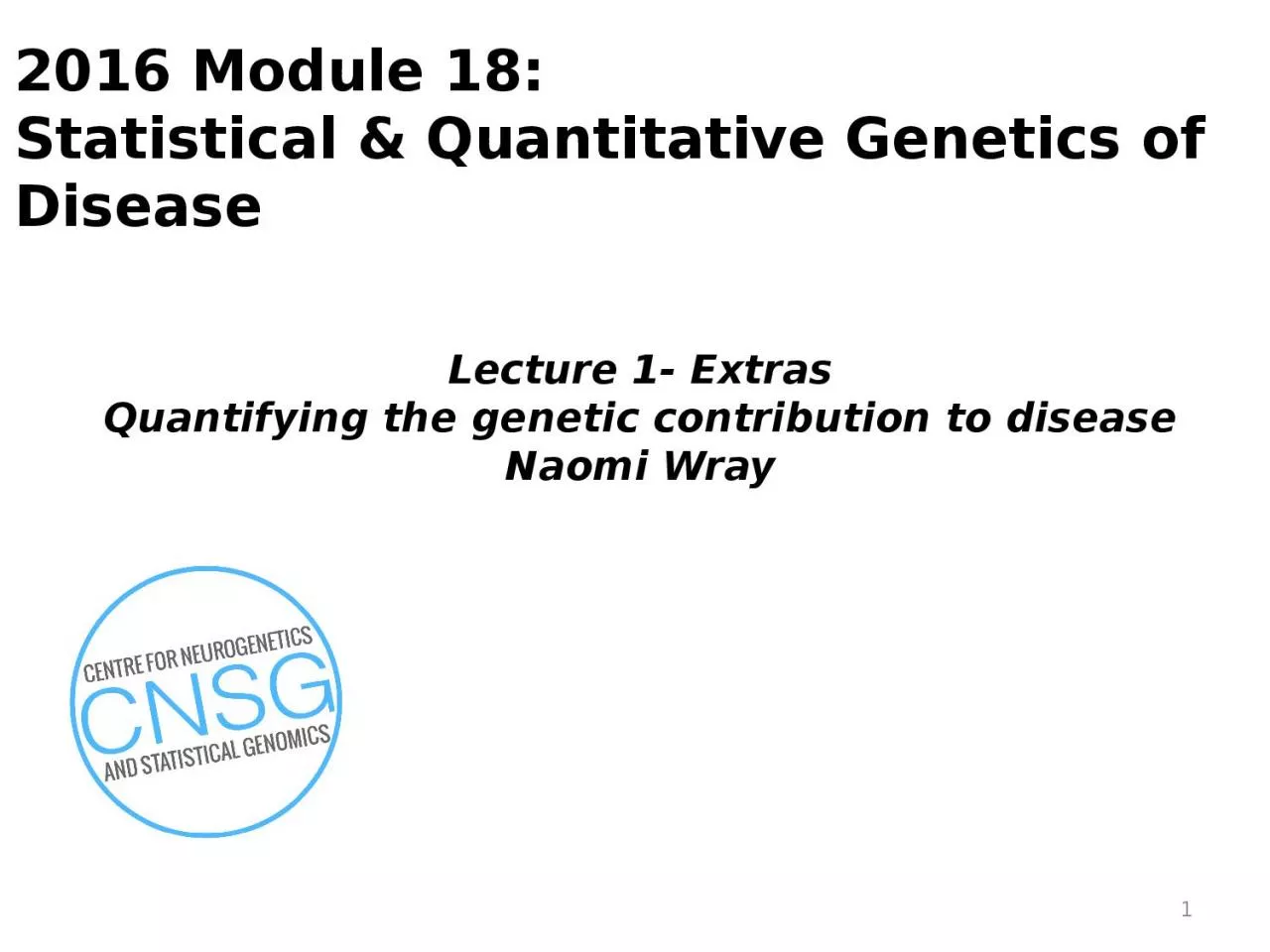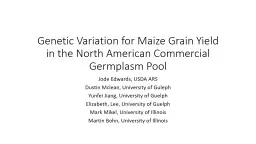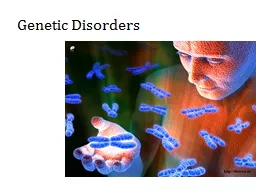PPT-Lecture 1- Extras Quantifying the genetic contribution to disease
Author : ethlyn | Published Date : 2023-05-20
Naomi Wray 2016 Module 18 Statistical amp Quantitative Genetics of Disease 1 Misunderstandings in MZ twins Estimates of heritability of liability to a number of
Presentation Embed Code
Download Presentation
Download Presentation The PPT/PDF document "Lecture 1- Extras Quantifying the genet..." is the property of its rightful owner. Permission is granted to download and print the materials on this website for personal, non-commercial use only, and to display it on your personal computer provided you do not modify the materials and that you retain all copyright notices contained in the materials. By downloading content from our website, you accept the terms of this agreement.
Lecture 1- Extras Quantifying the genetic contribution to disease: Transcript
Download Rules Of Document
"Lecture 1- Extras Quantifying the genetic contribution to disease"The content belongs to its owner. You may download and print it for personal use, without modification, and keep all copyright notices. By downloading, you agree to these terms.
Related Documents














